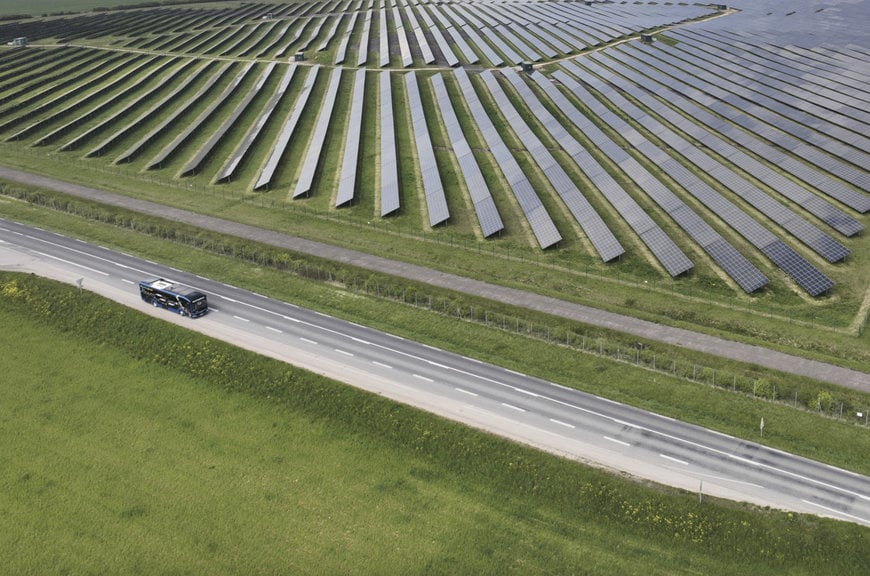www.industryemea.com
16
'24
Written on Modified on
MAN REDUCES GREENHOUSE GAS EMISSIONS AT ITS SITES BY OVER 50 PERCENT COMPARED TO 2019
GHG fleet emissions per vehicle kilometer of trucks, buses and vans sold by MAN (Scope 3) are to be reduced by 28% by 2030 compared to 2019. In the 2023 reporting year, a reduction of 12.8% was achieved here.
www.man.eu

By joining the "Science Based Targets initiative (SBTi)" climate protection initiative in 2021, binding and science-based targets were set to reduce climate-damaging greenhouse gas emissions: By 2030, 70% of greenhouse gas emissions (GHG) are to be saved at MAN's global company sites compared to the base year 2019 (Scopes 1 and 2). By the end of 2023, a reduction of 51.2 percent had already been achieved.
Decarbonization by means of alternative drives
In 2023, more than 96 percent of the company's greenhouse gas emissions were generated during the use phase of newly sold MAN products. The conversion of the vehicle fleet to alternative drive systems is therefore the greatest lever for the commercial vehicle manufacturer to achieve its ambitious CO2 targets.
MAN has succeeded in becoming the market leader in Europe for all-electric city buses in 2023, just four years after the market launch of the MAN Lion's City E. The ramp-up of all-electric trucks is also continuing to gather pace with the sales launch of the MAN TGX and TGS in October 2023. The first vehicles are expected to be delivered to customers as early as 2024. In addition to the purely battery-electric drive, MAN also sees hydrogen-based drive systems. A small series of a truck with hydrogen combustion technology (MAN hTGX), which will be classified as a zero-emission vehicle (ZEV), is to be delivered to the first pilot customers as early as 2025.
Low CO2 production
Scope 1 and 2 greenhouse gas emissions are to be reduced even further through the systematic conversion and modernization of the energy supply, the use of renewable energy sources and energy efficiency measures.
MAN is implementing a comprehensive catalog of measures to achieve these ambitious savings targets. The energy supply at the production sites is gradually being converted to electricity and heat from renewable energy sources. In addition to the external procurement of renewable energy, this also includes the installation of photovoltaic systems, for example in South Africa and Ankara. At the plant in Krakow, the gas heating system was converted to a lower-CO2 wood pellet heating system. The Nuremberg site was also connected to a district heating network and the use of geothermal energy is being planned for the main plant in Munich.
In terms of energy supply, the proportion of renewable energy sources from so-called "PPAs" - Power Purchase Agreements - is gradually being increased. This will increase the direct purchase of solar or wind energy as well as the planning security of the energy supply.
Circular economy
In times of raw material shortages, MAN sees the circular economy model as making a significant contribution to value creation and environmental protection in equal measure. This includes the efficient and responsible use of raw materials, the reuse of parts and components and the prevention of environmental pollution. In the year under review, the recycling rate for production waste was 95 percent.
www.man.eu

